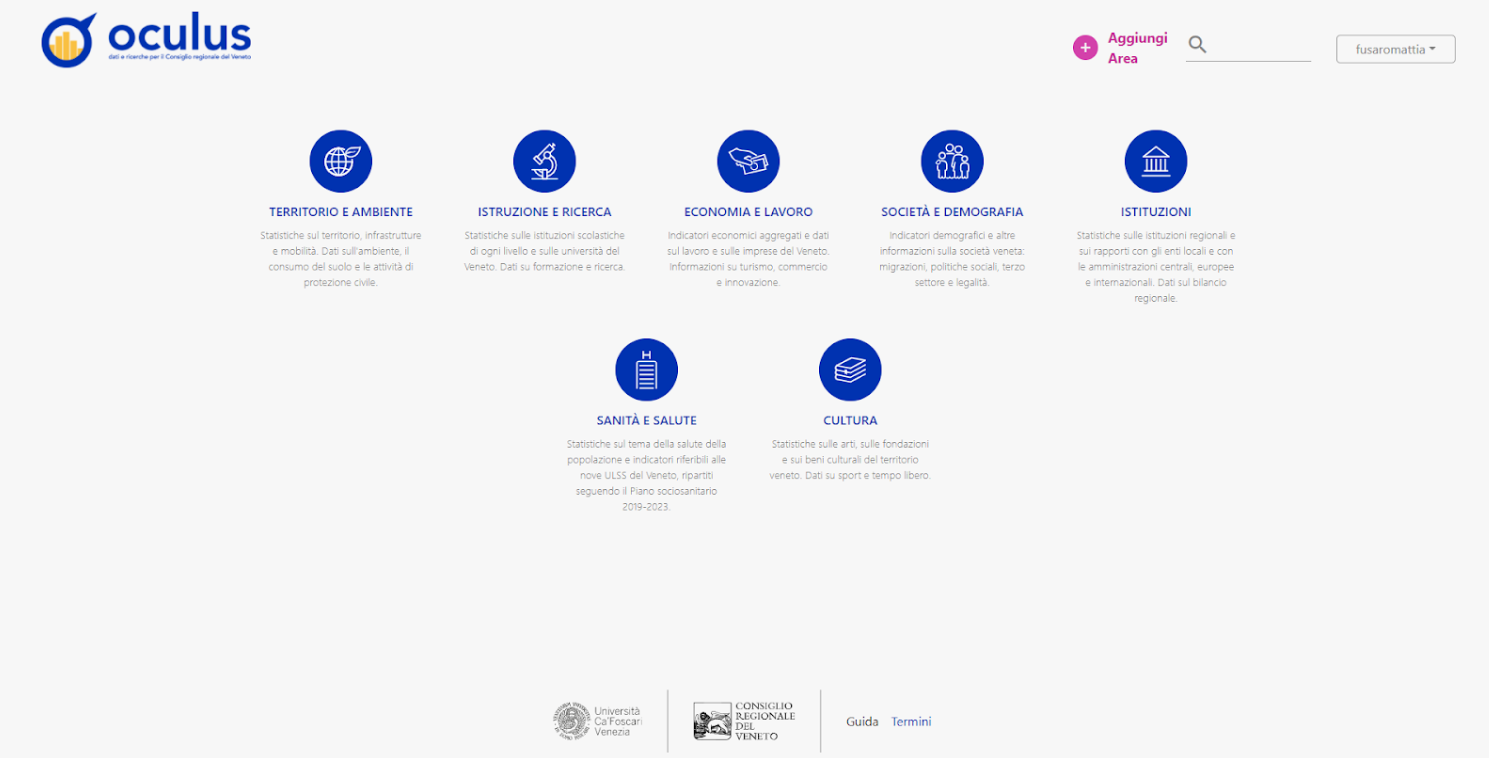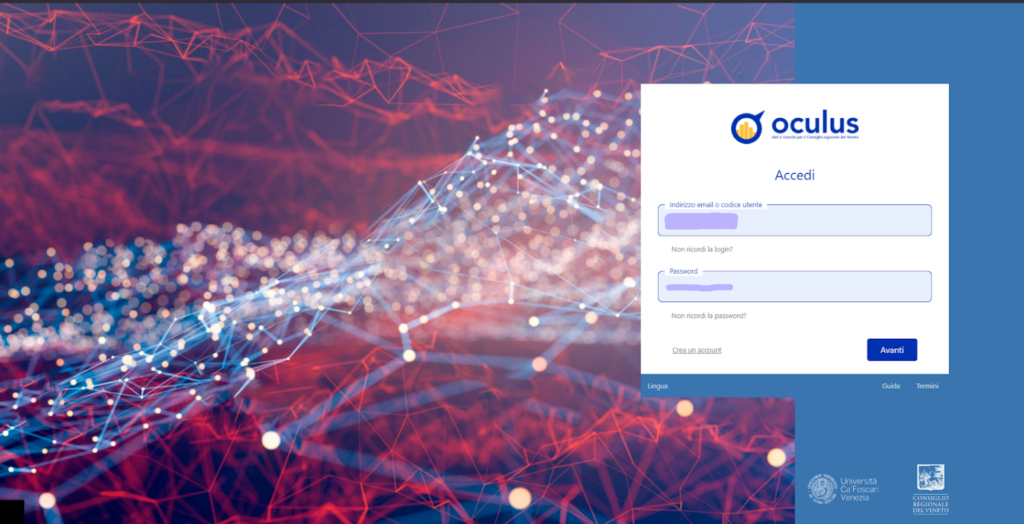
Oculus
For the completion of my bachelor’s degree at Ca’ Foscari, as in any university, it was necessary to either carry out a personal project or complete an internship at a partner company.
In my case, I was contacted by a professor who needed a few students for a 3 to 6 month project involving the update and optimization of an internal website used by the Veneto Region.
The project was quite clear: we had to revive an old, rarely used website that had been neglected and make it accessible, modern, and functional for regional council members.
These council members required a unified tool that would allow them to analyze all regional data from any location whether at home, at the office, or on the go, this included information on tourism trends, active research within the region, employment data, funding and incentives, population census statistics, and more.
Oculus was created about seven years ago to meet the needs of the council as a project developed by the Faculty of Economics at Ca’ Foscari, it is a full-stack web application, divided into two main components:
- A front-end web application designed as a Single Page Application (SPA), implemented in TypeScript using the Angular framework.
- A back-end web service with a RESTful API, implemented in JavaScript on a Node.js environment.
The platform allows users to upload data in CSV format and visualize it through various types of charts, with filtering options to enable deeper data analysis.
Data is categorized based on the type of event or environment they describe, following a structure similar to government ministries such as environment, labor, health, education, and so on.
Each category is further divided into sections, representing the specific events or studies to be analyzed, within these sections, users can fully and securely manage the data viewing, deleting, modifying, and downloading it as needed.
So, before and during the summer of 2021, along with two colleagues, I worked on updating, refining, and adding new features to the product. Fortunately, the initial phase was less complex than expected, we mainly had to identify the library versions that would best support our development process, however, the next phase turned out to be much more challenging.
We were asked to address some issues with the application and implement new features, since it was a long-term project, we divided the work into smaller tasks and set milestones to stay on track.
Specifically, I was responsible for:
- Developing a tool for data editing, including an algorithm to enrich specific CSV files.
- Exploring potential evolutionary paths for the application to enable (semi)automated data updates.
- Fixing various CSV upload bugs, such as data loss, incorrect formatting, upload failures, and out-of-scale values.
- Adjusting and generating the CSV format for downloads from the platform.
Looking back, I can say that this experience was truly rewarding, not only did I get the chance to work on a real world project that had a tangible impact, but I also had the opportunity to meet many people fellow developers, professionals in the field, and even some regional council members.
Working closely with them allowed me to better understand their needs and how technology can provide concrete solutions to complex problems, it was incredibly satisfying to see how our work contributed to making data more accessible and usable for decision makers.
Beyond the technical skills I developed, this experience also opened up new opportunities for me, it helped me gain visibility in the field, connect with industry professionals, and even led to potential job offers and collaborations in similar areas, it reinforced my interest in developing tools that can improve data analysis and accessibility, and it gave me the confidence to take on future challenges in this space.
Overall, it was a journey that combined learning, teamwork, and professional growth one that I am truly grateful for.
Of course, I then had to write my thesis to complete my studies, however, that process ultimately led me down a different professional path, but that’s another story.

